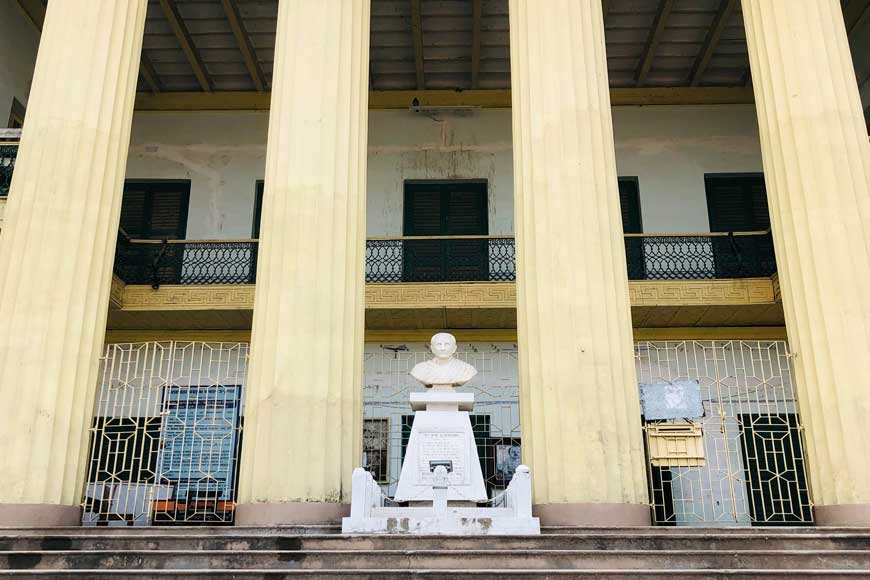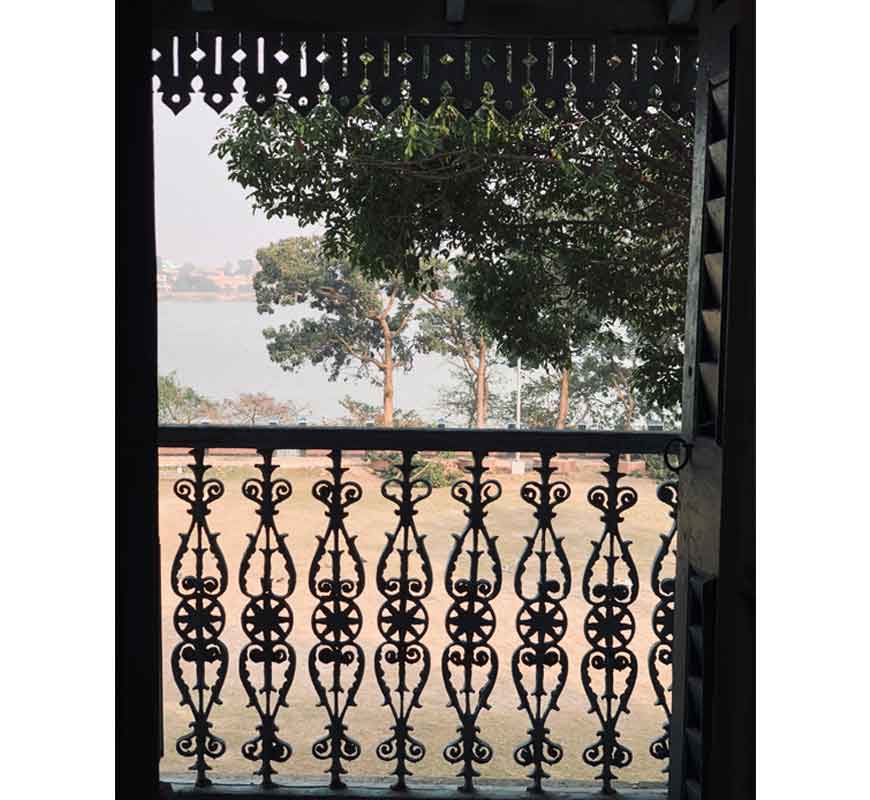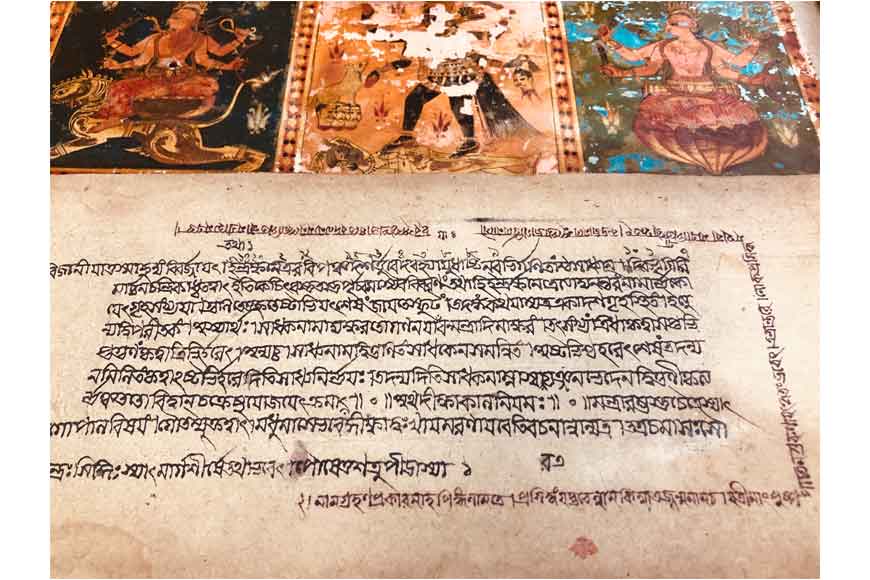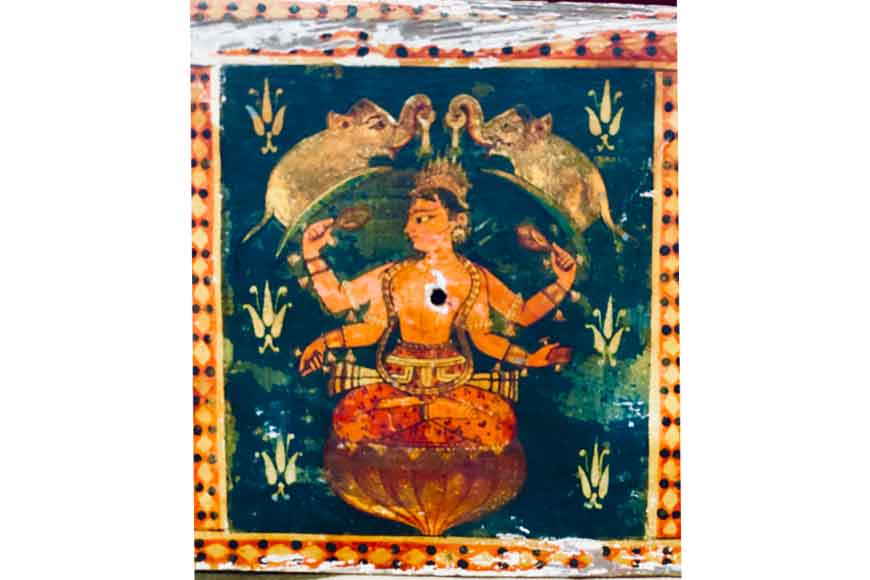Uttarpara Library, the first public library of India still has 300-year-old Buddhist manuscript!

Bengal’s love for sharing information on global affairs started with opening of libraries even before independence. No wonder the first Indian public library and probably also the first in Asia was started by Joykrishna Mukherjee, a prominent Bengali landlord and a reformist in this state. Australian author John Zubrzycki of Empire of Enchantment: The Story of Indian Magic recently took the name of this once famous Uttarpara Public Library. The article ‘The Calcutta Pococurante Society, Public and Private in India’s Age of Reform,’ written by Joshua Ehrlich (Harvard University PhD student working on the East India Company and the politics of knowledge) speaks about a visit to the Uttarpara Public Library, he found an obscure text on the shelves. The text sheds light on the idea of ‘public’ in 19th-century Kolkata. On page 22, the article describes a typical English society in Calcutta which says: “My dear compatriots and I,” one member sets the scene, “are scribbling in Calcutta, the ruling caste, and tippling our Hock and Champagne round this table.”

The article also points out certain valuable information about Uttarpara Public Library which states, ‘In its early days, this remarkable institution featured a reading room with thousands of works in Bengali and Sanskrit as well as English; upper rooms for meetings, lectures, and other town hall functions; and a garden of choicest fruits and flowers ... for the resort and recreation of the community.” Conceived with the aim of widely diffusing knowledge, the library circulated volumes in the surrounding area and offered a gold medal to anyone who could pass an advanced reading examination.
Centuries ago, there were several visitors to Uttarpara Public Library which included Sir Arthur Wellesley, Sir Ashley Eden and Sir Rivers Thompson. While the home grown literate crowd included Pandit Iswarchandra Vidyasagar, Keshab Chandra Sen and Michael Madhusudan Dutta. This winter, I made my way to Uttarpara Jaykrishna Public Library to satisfy my curiosity about the very existence of such an important public library in West Bengal. It was a crispy Kolkata winter morning when the sweet shops were busy selling Bengali sweets to satisfy the winter taste buds, people were covering their heads with shawls to keep away the winter chill and fairs such as the Khadi fair was taking place to promote sustainable fashion to the mass.

Crossing the Bally bridge, we drove through busy Uttarpara and as our car reached the front iron gate of the library, I got my first glimpse of the first free public library in India. It is still standing today on the Grand Trunk Road on the banks of Hooghly, over an acre of land. The library building was an old charm palatial building with its high-pillars, huge wooden hanging verandas. The checkered floors, bright green khorkhori windows, and wooden furniture brought back an era that does not exist anymore.
The library still stands as testimony to the grand initiative of a Bengali man which was guided by London Public Library act 1850 to nurture curious minds in Bengal, modernize public education and progress the society. It stood as a silent witness to the educated Bengal society while waiting to be looked after by future generations. A room on the first floor with a view of the Hooghly river from the veranda can be accessed by public on request. It is the same room where famous Bengali poet Michael Madusudan Dutta stayed and wrote. The Library has a collection of his book ‘Hectorbadh Kavya.’ The furniture and collectables were enjoyed by educated Bengali elites and Europeans alike making Uttarpara Library a unique place in the world where knowledge was and is still shared with public.

Walking through the library, gave me goosebumps, as I learnt it holds 45000 old books. Initially the library had 3000 books. There is still a rare collection of books from 17th-19th century. The library all together has a collection of about 50 to 60 thousand books and not to mention the 2500 old periodicals and over 250 manuscripts. The staff showed me a manuscript that has survived over 300 years. The manuscript was part of a 200 Sanskrit palm-leaf and handmade paper manuscripts collection. The library prides itself as having this collection from the monasteries of Tibet, Varanasi and Kashmir. It was a hand-made paper manuscript that celebrated Buddhist teaching through the practice of tantra and yoga. It has the most beautiful painting of tantric Kamaley Kamini (Lady of the Lotus with celestial elephants that support the cardinal directions). I was impressed by the calligraphic style of handwriting with Sanskrit grammar and Bengali vocabulary. To me, it gave a unique perspective about Bengal’s rich literary heritage and how Bengal was the centre for Buddhist learning.
Uttarpara Public Library still remains an important institution just like Asiatic Society of Bengal, National Library of India or Indian Museum to keep educating curious minds. I cannot agree more with Sir William Hunter, who stayed in Uttarpara Library several centuries ago. He stayed there for three years to compile his statistical accounts of Bengal and imperial Gazetteer and stated that the library is ‘a unique storehouse of local literature alike in English and vernacular tongues.’









